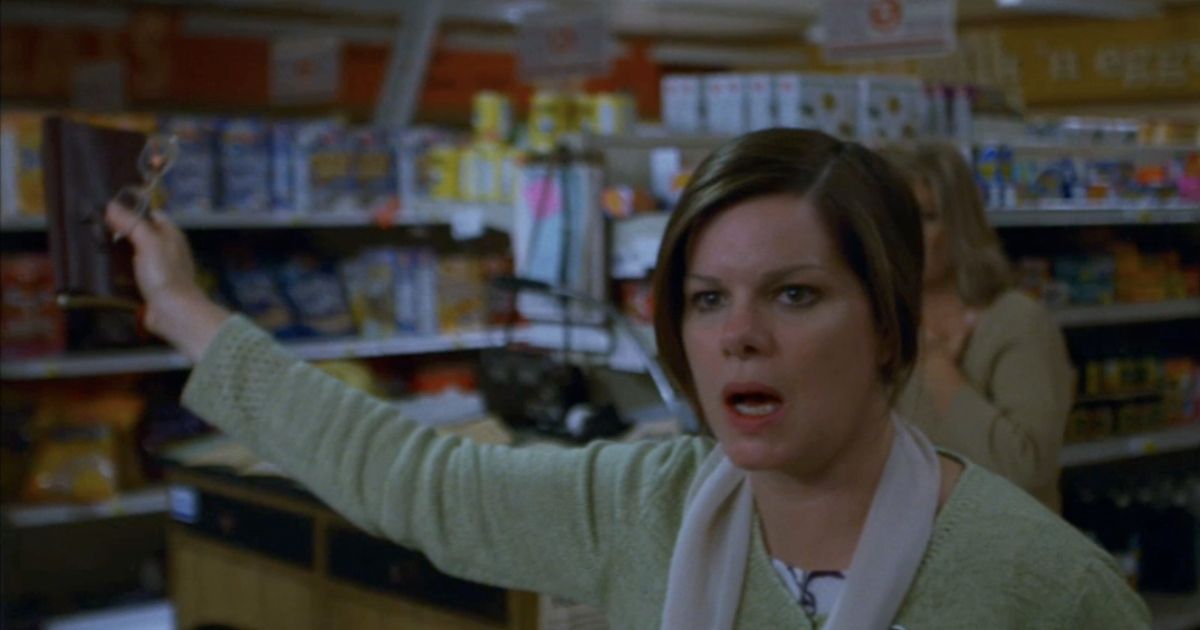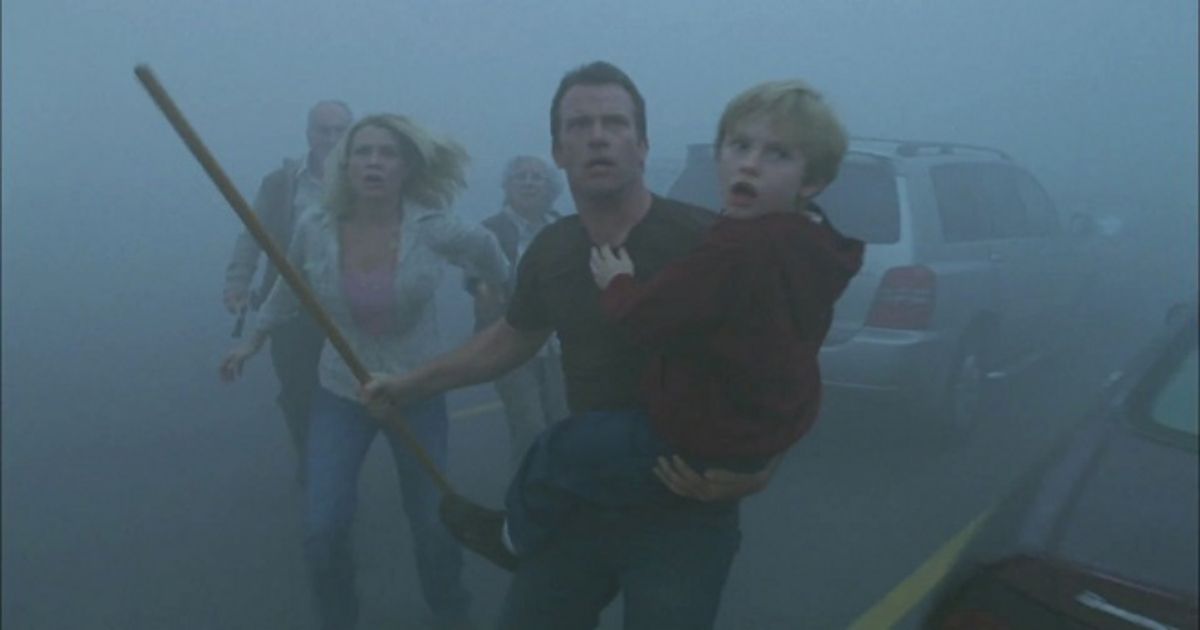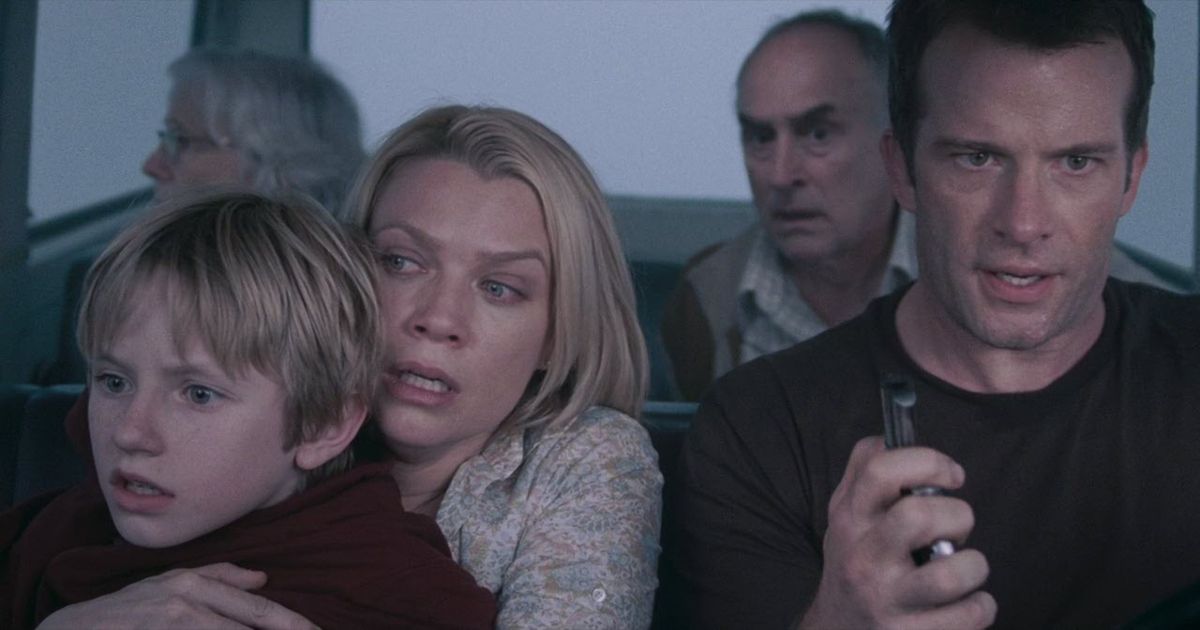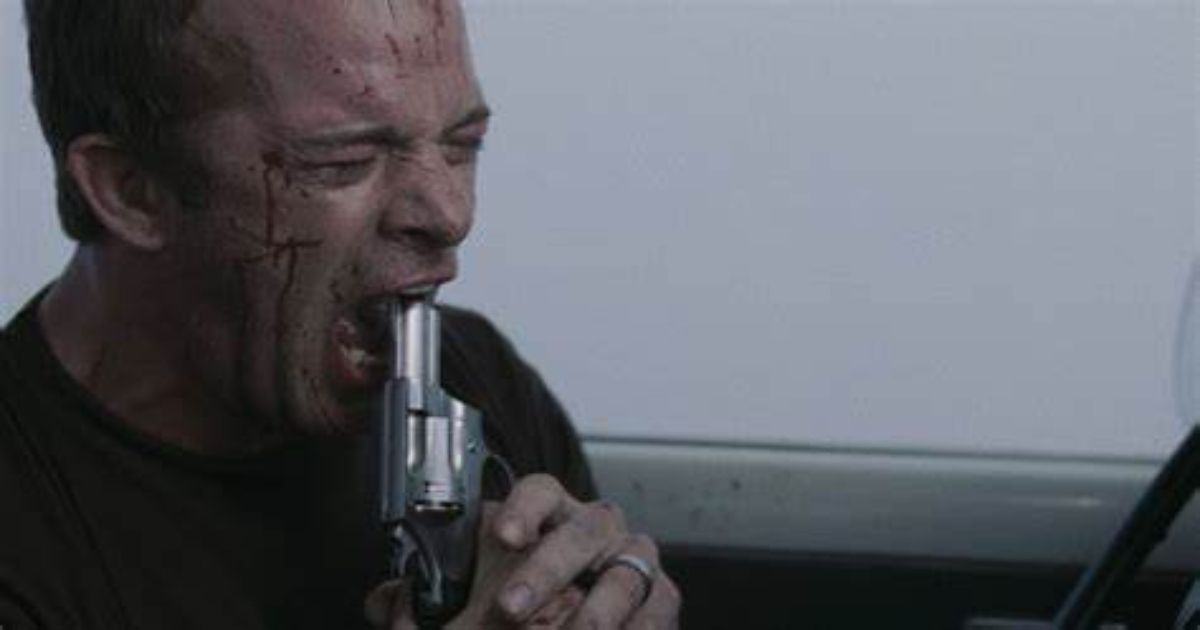Stephen King’s The Mist was directed by Frank Darabont, who has adapted several Stephen King books and stories, including two of the best: The Green Mile and The Shawshank Redemption. Based on King's novella of the same name, The Mist follows a group of people from a small Maine town who are trapped in a supermarket while a thick mist envelops everything, containing dangerous creatures enshrouded by the fog. What results is a disturbing horror, a bleak look at humanity which posits that just beneath the veneer of our materialist society lies a vast abyss of violence and brutality capable of surfacing anytime.
The Mist and How Man is Meaner Than Monsters
The film resembles George A. Romero’s Night of the Living Dead in the way that its bottle movie structure reveals dark truths about the human condition. In that film, a group of people are gathered in a house, and can’t get along well enough to protect themselves from the terrifying zombies outside. They threaten each other, and it is clear that the real danger is not zombies but fellow human beings. This explains the nihilistic ending of the film, when the lone survivor of the house is shot to death by rednecks with guns and then his body is burned.
The Mist is very much like great zombie movies in many ways. While the former has flying bug-like animals with tentacles, they are analogous to the zombies in that they seemingly exist just to kill. The film is also similar to another zombie franchise, The Walking Dead television series, which Frank Darabont also developed and produced at the beginning. Three of the lead characters in The Mist were cast members of The Walking Dead, and the makeup for both the movie and the series was created by Greg Nicotero and Howard Burger.
There Are No Good Guys
In The Walking Dead, the zombies are really just background, and the real danger is the threat of other people, hungry for power and control, full of violent, sadistic impulses and a tribalism that ensures the destruction of humanity. The zombies might be scary, but not the real threat. People with different ideologies are the ones who argue amongst themselves and resort to murdering each other, even though each believes that they are in the right, "the good guy," the one with all the answers.
When “the good guys” fight amongst themselves, we don’t even need monsters or zombies to kill them, something the wars of the past century has proven; the human race has a long history of humans killing other humans because of fundamentalism to a certain ideology, in wars over territory, religion, and values. This implies that there are no “good guys,” just fighting factions, their loyalties divided by religious and other values, which serve to create differences and cause war, rather than peace and unity. So many people have died in the name of religious fundamentalism, a point that The Mist makes which continues to be relevant.
The Mist Reflects the Anti-Science of Today's Covid Era
Even more relevant is the fact that the monstrous creatures in The Mist are manmade (or at least unleashed by humanity). We learn from some soldiers in the store that there had been experimentation that led to the existence of these monsters in something called the Arrowhead Project, which was meant to provide a portal to other worlds. Thomas Jane plays David, the protagonist and one of the last of the rational people, and Marcia Gay Harden is incredible as a downright evil and horrible character, the demented religious fanatic Mrs. Carmody.
When Mrs. Carmody finds out about the military experiments, she starts including scientists as part of the evil in this world that has led God to come down and wreak havoc on mankind. Gradually, more and more people side with her as common sense is eradicated by anti-science, conspiratorial fundamentalism. This distrust of science and the willingness to blame experts for our problems is symbolic, representing an anti-intellectual view in modern politics. This movie may have been conceived of long before the spread of the Coronavirus, but it accurately depicts how politicians and their brainwashed constituents blame science and scientists for our problems, refuse to trust the science behind medical experts, and insist that science be replaced by religion.
Because these creatures were created by humans, essentially all the deaths are caused by humans, either directly or indirectly, which is a strong condemnation of modern society and what humanity does with its technology. It's fitting that the monsters in The Mist were unleashed by the military-industrial complex; human technology so often only exists if it can help militaries conquer and kill. According to one character, the problem is that humans are “fundamentally insane,” ready to believe anything and fight for anything as long as they are assured that if they die, they will have eternal peace in the next world.
Religious Fundamentalism and Mob Mentality in The Mist
The convenience store is a microcosm of society, and Mrs. Carmody represents fanatic religious fundamentalism. The most telling moment is when the main characters decide to flee the store and face whatever monsters are out there because that is the safer, more sane choice. As Mrs. Carmody keeps preaching to everyone in the store, she gets more and more followers.
One of the departing characters remarks that Mrs. Carmody had a few followers, and that after a few hours or more preaching she would have more, and that after a terrifying night they all would be following her, seeing her as a Savior, even as she calls for the sacrifice of a young child to appease the angry gods. She also curses the modern world and aspects of secular humanism like abortion and lack of belief, and demands a return to old-fashioned unforgiving values in a world where God is not a benevolent creator but an angry tyrant, filled with wrath and anger. (Even in the supposedly progressive 2021, people spoke about Covid as a result of God's wrath).
Herd mentality quickly sinks in when everyone is terrified, and they need an explanation and a scapegoat to make things right; Mrs. Carmody provides both. Her explanation was that this event was the fulfillment of Biblical prophecy, specifically the descriptions of Armageddon and the end of the world as written about in the Book of Revelations. She gets everyone all riled up to the point that when she suggests sacrificing a young child, everyone immediately agrees.
The child is saved by the few remaining sane survivors who then head into the uncertainty of the mist for safety. The grimmer the situation becomes, the more the people cling to their xenophobic and distrustful natures. And as things get progressively worse, people are increasingly ready to turn to violence and sacrifice to save themselves, because false hope is better than no hope.
Mrs. Carmody makes a speech in which she blames modern society and problems like lack of faith and abortion rights, and the crowd goes crazy as she names all of these modern social problems, saying that they are a product of the Devil, which makes it easier to scapegoat her skeptics and even kill them for not clinging to a Biblical lifestyle.
The Mist Has One of the Darkest Endings to Any Movie
This theme is unfortunately pretty timeless. According to the director, a big influence on The Mist is an episode of The Twilight Zone called The Monsters Are Due on Maple Street. After all the power goes off in a small neighborhood, the residents believe that some people on the street are really monsters or aliens in disguise as humans. Everyone is a suspect, and the situation degenerates to the point that one neighbor murders another. Yet even that doesn’t stop the fighting, and soon everyone is convinced that a young kid is the monster. They argue and fight, and civilization goes out the window in a very brief amount of time.
This is exactly what happens in The Mist — the people end up fighting each other, oblivious to the real danger of the monsters outside. The Twilight Zone episode is about the dangers of mob mentality, and it's pretty sad that television made in 1960 is still reflective of today's divisive, herd-mind society. The Mist brilliantly modernizes this story, but unfortunately doesn't need to change much, as human nature seems to be irrevocably violent and tribal. What The Mist does do, however, is take this story to its most extreme conclusion, resulting in one of the most depressing endings of any film ever made.
The particularly nihilistic end of the movie finds five survivors of the supermarket driving away in a Jeep; thinking there is no hope, they all decide to die by suicide. The only problem is that their gun has just four bullets, and there are five survivors. What happens next is incredibly powerful and sad, with the worst, most pessimistic ending possible. There are more deaths that are in vain, that are the result of human error and fear. Hysteria wins at the end, as everyone turns on each other.
While perhaps The Shining and Shawshank Redemption are more critically acclaimed and iconic films, and other films like IT are certainly more popular, The Mist remains arguably the darkest Stephen King adaptation ever made. It is a tragic, pessimistic, and grim look at modern society and the forces that are tearing it apart. Years later, The Mist is still relevant, and a cautionary tale of how society can devolve into violent anarchy.

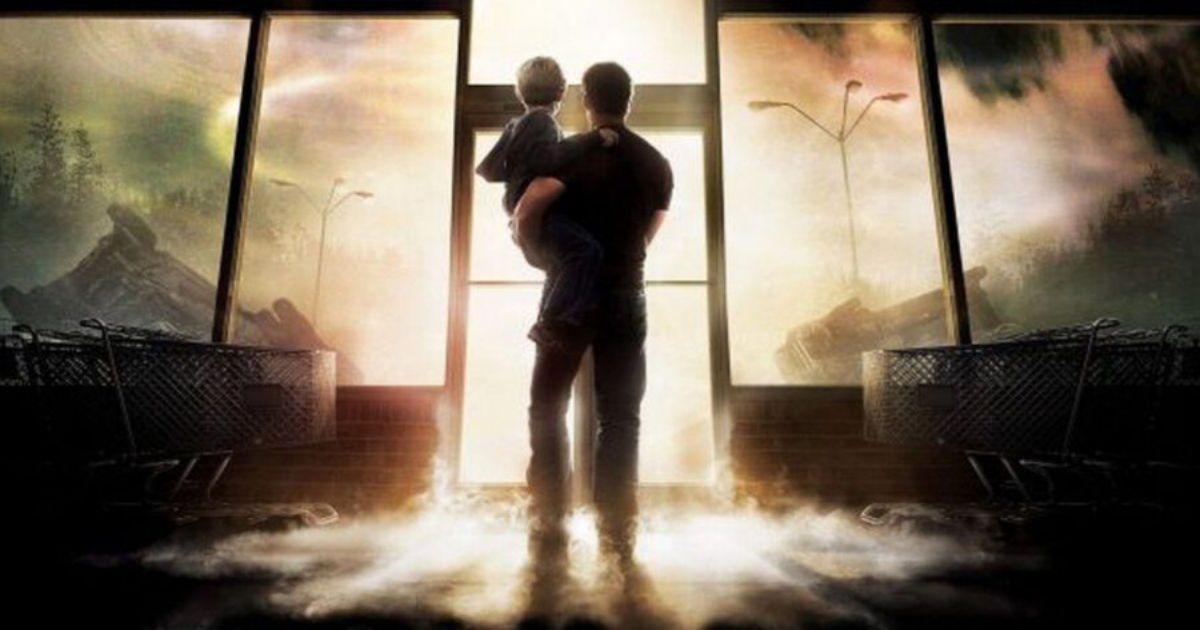
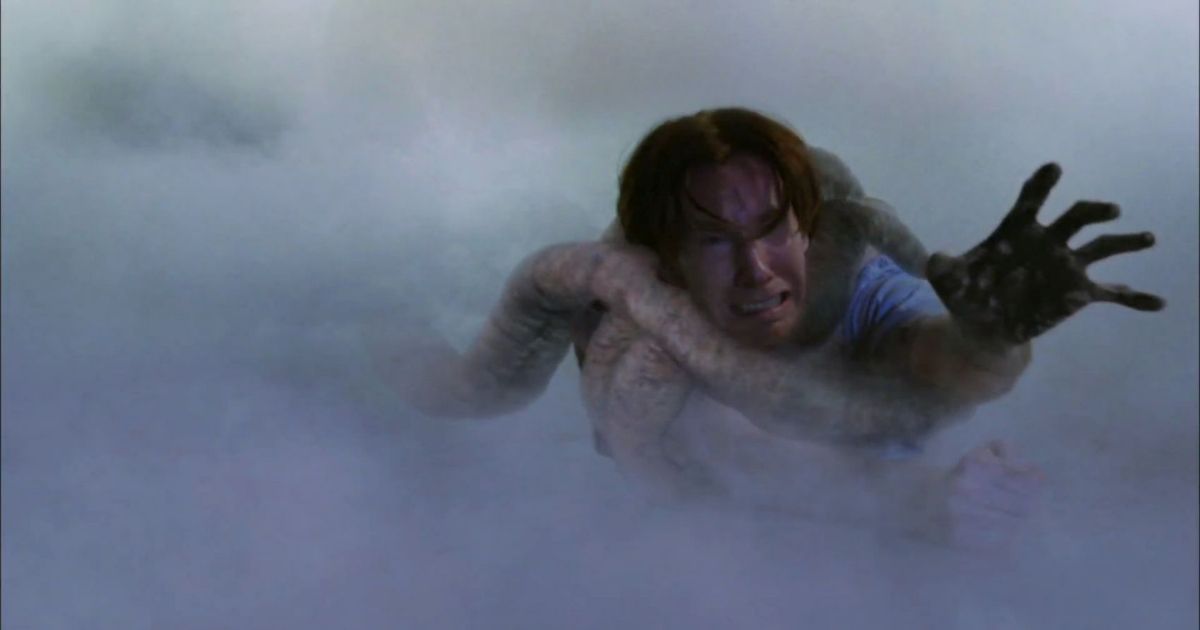
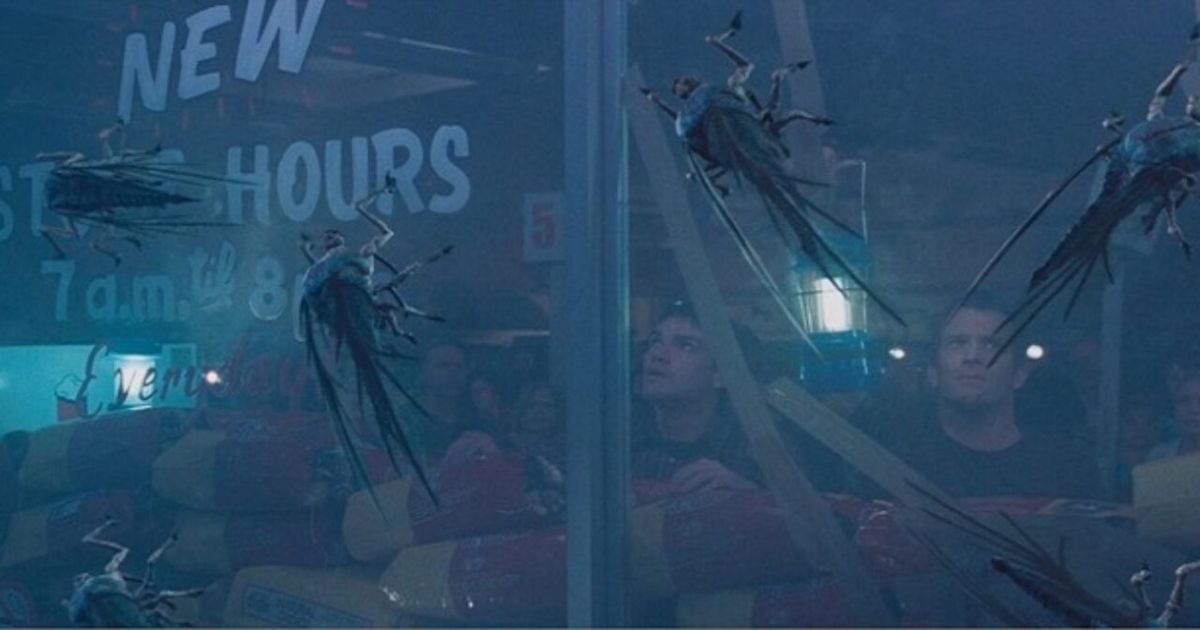
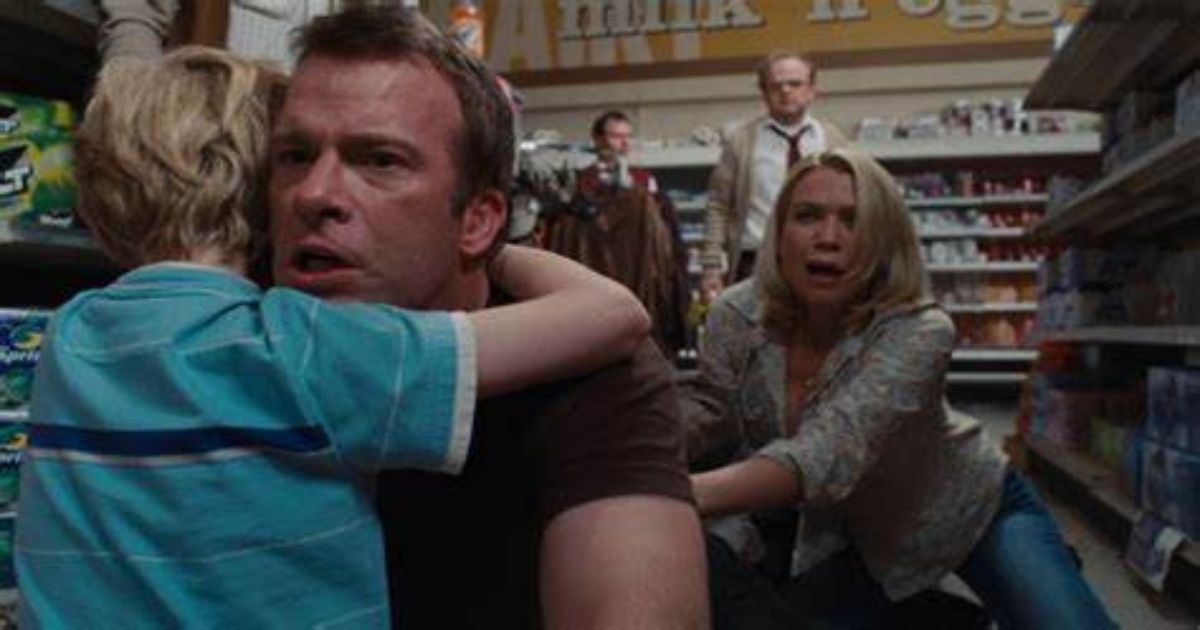
.jpg)
